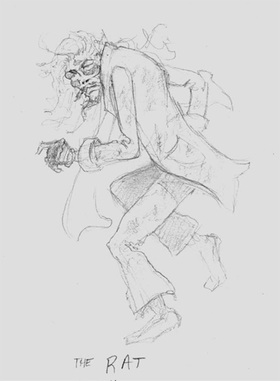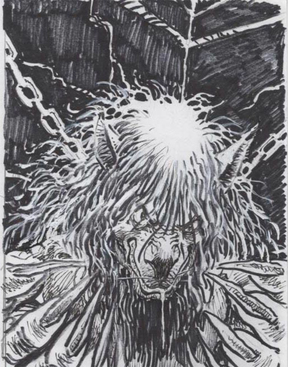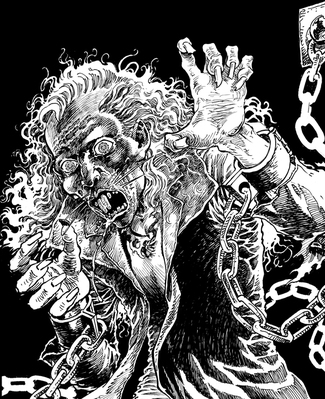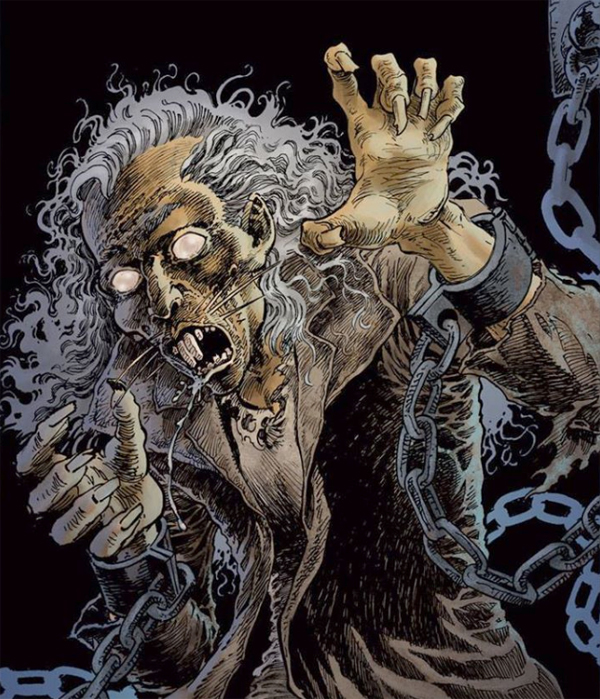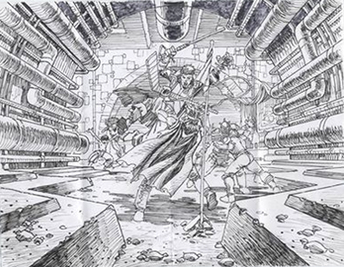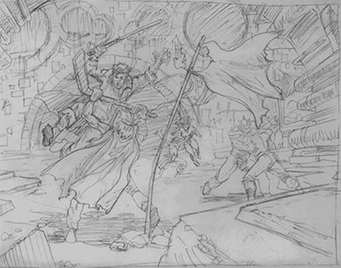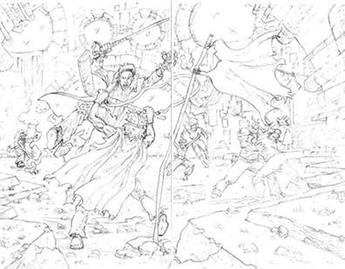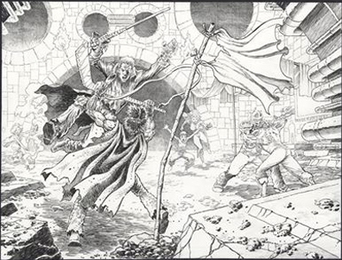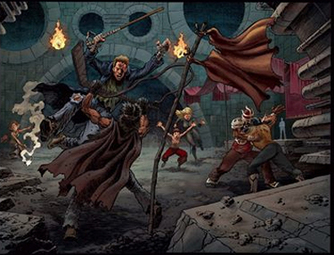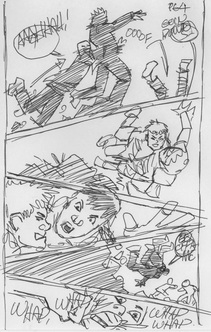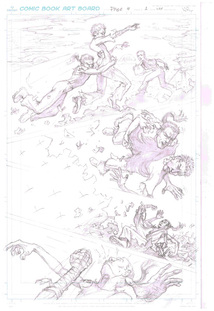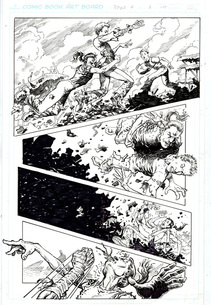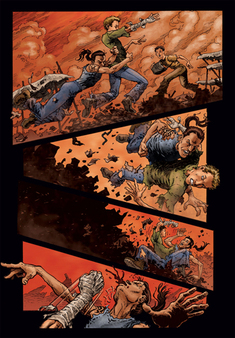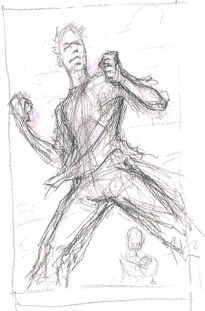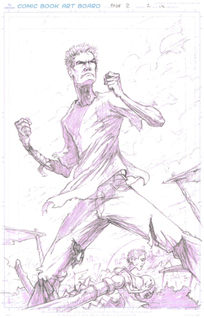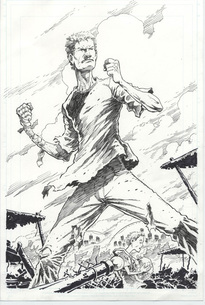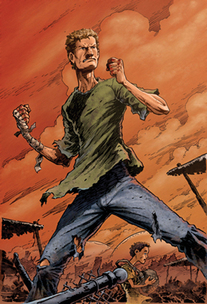| We thought it would be fun to take readers through the development of “Rat,” one of the most intriguing characters in the “Forgotten City” series. Rat makes his first appearance at the end of Issue 3. Shown at right, is the character as originally conceived—a former scientist, who had been kept in a cell for years. |
| In the sketch to the right, Daniel Mann changes the foreground hand closer to the original pencil to give the Rat a creepier, more robust feel. He achieves this by elongating the fingers and showing the bone structure under the skin. The uncut fingernails also are emphasized to show Rat’s isolation from society. |
